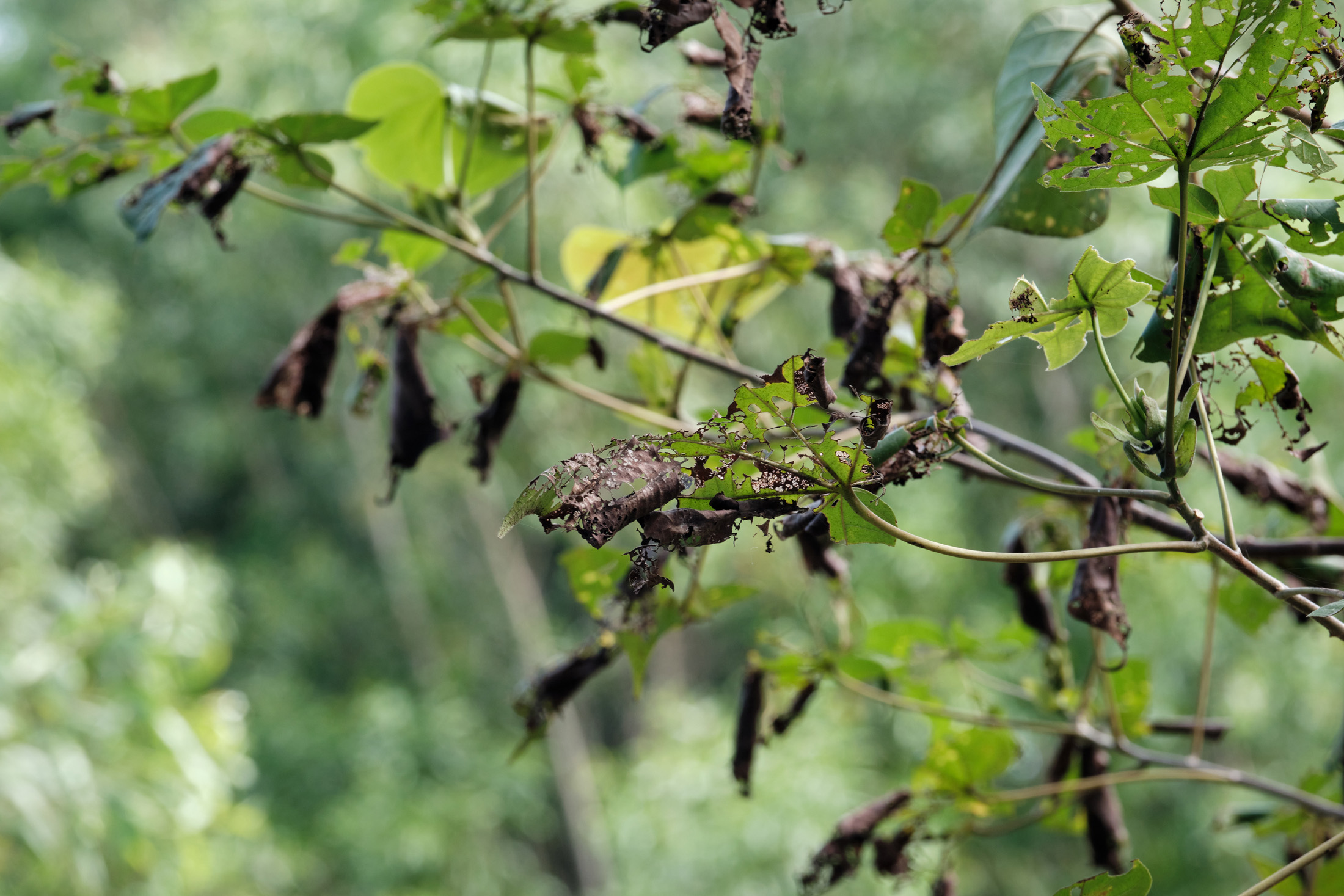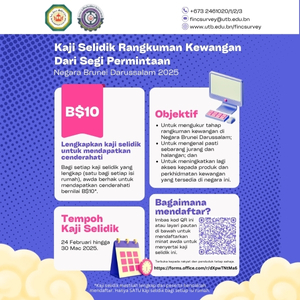INALÅHAN, Guam (THE WASHINGTON POST) – The drone’s propellers whirred to life, blurring as they picked up speed and filling the air with a mechanical buzzing. Within seconds, the large buglike contraption was rising high above a largely barren stretch of red clay soil – one of many that run like scars through the rolling hills in the southern part of the island.
As the operator manoeuvred the machine through the sky with a handheld controller, dozens of small dirt-coloured balls spewed out of a hopper attached to the bottom of the drone and rained down onto the landscape below. Each clod – ranging in size from roughly the diameter of a dime to a quarter – was packed with seeds.
Researchers and armies of volunteers have tried to restore the Pacific island’s historically lush landscapes. Without as much of its original vegetation, the exposed soil gets eroded by heavy rains, turning rivers and streams red with sediment that can contaminate drinking water sources and smother coral reefs downstream.
But it can take several hours of hiking to reach some of the eroded areas. Meanwhile, with climate change, the island is getting hit by more extreme storms, including Super Typhoon Mawar in May, one of the worst typhoons to slam the island in decades.
“We’ve been planting thousands and thousands of trees,” said Austin Shelton, who oversees a project called Guam Restoration of Watersheds (GROW). “It’s still like putting a Band-Aid on one hole on your shower head.”
Drones, he hopes, will help give his team a leg up.
From the western United States to Australia, land managers are starting to deploy drones to drop seeds over areas devastated by wildfires and floods, or left barren by logging and other human activities. The planet lost 4.1 million hectares of tropical primary forest in 2022, or the equivalent of 11 soccer fields of forest per minute, according to the World Resources Institute. While aerial seeding probably won’t replace other reforestation methods, some experts say the technology could improve access to mountainous terrain and rapidly disperse many more seeds than planting by hand. One company, for instance, says its drones can seed up to 60 hectares a day.
With its diverse terrain, Guam could be an ideal place to test the promise of this method.
“We will take care of Guam,” said Shelton, director of the University of Guam Center for Island Sustainability and Sea Grant. “Then, once we have the technology ready, we’ll be able to share it with all of our island neighbours who have similar watershed issues that we do.”

‘An uphill battle’
When Teddy Lee Concepcion joined the GROW project team in 2019, he knew the job wasn’t going to be simple. Large tracts of once-verdant land in southern Guam have been devastated by arson fires, poor development practices and off-road vehicles, as well as invasive ungulates foraging and grubbing through the landscape.
The fires, most often set by deer poachers to clear vegetation and make it easier to spot prey, have done the most harm, Concepcion and others say.
“Wildfires aren’t natural in our ecosystem and the plants on Guam aren’t used to this, so it’s an uphill battle,” he said. “The plants that we lose during a fire, they don’t know how to come back.”
Many residents in Guam’s southern villages have experienced the effects of the stripped land. Without vegetation to help hold the soil in place when it rains, sediment washes downstream and can disrupt operations at one of the island’s main southern water treatment plants. The turbidity has triggered shut-offs, leaving people temporarily without water and increasing the costs of maintaining water quality.
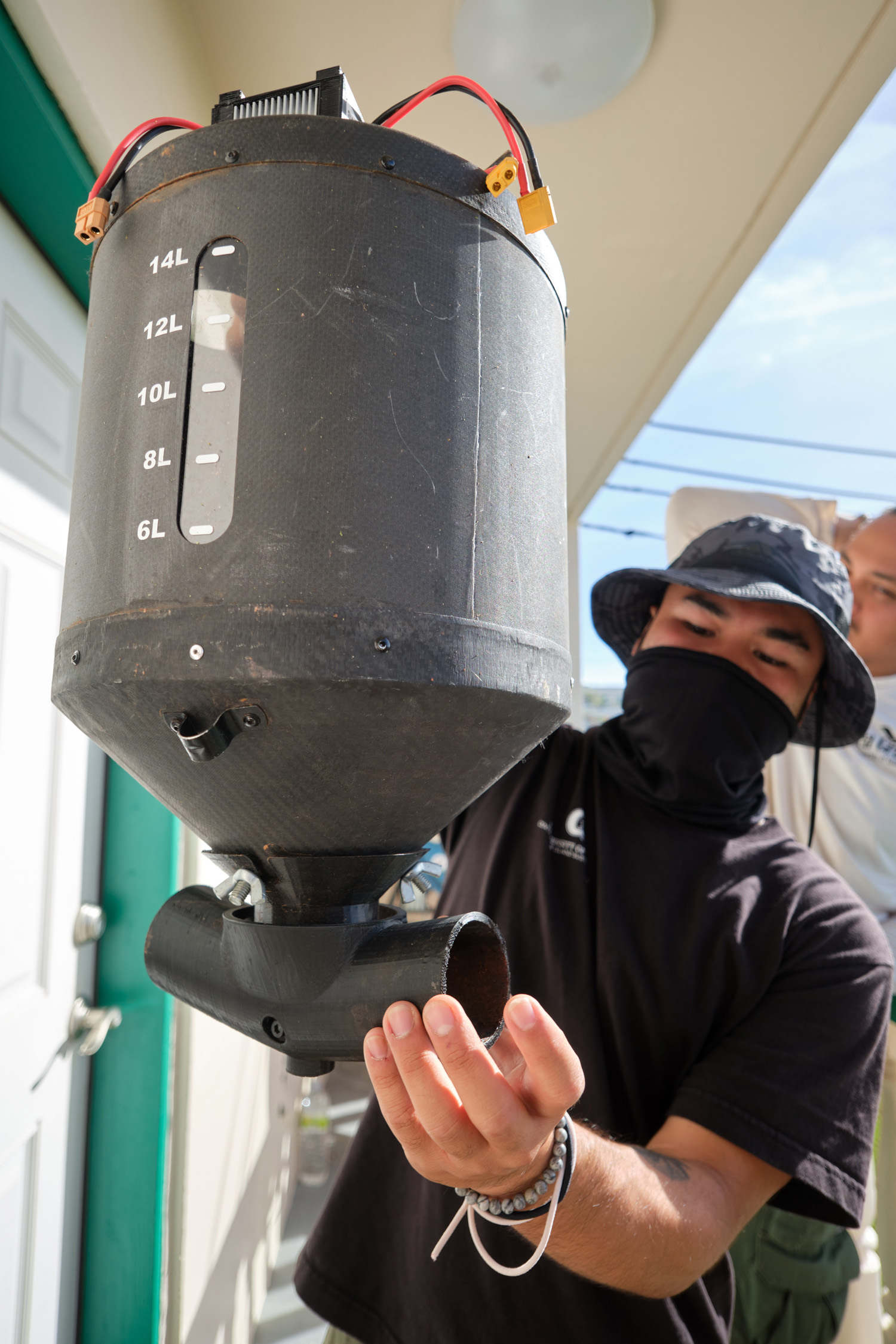
Addressing erosion in upland areas can help “ensure that we have the quality of water and not just the quantity of water,” said Evangeline Lujan, a senior regulatory analyst with the Guam Waterworks Authority and chair of the Guam Climate Change Resiliency Commission. “We don’t always want to be having soil in our rivers.”
While the goal is to restore all of the island’s watersheds, researchers have so far been focused on a roughly 25-acre site within the Ugum River watershed, which covers an estimated 5,000 acres of land.
Over the past few years, volunteers and university staff members have planted more than 14,500 native and non-native trees and plants at the site – mostly by hand. But this method of reforesting is often laborious.
First, the planting area needs to be prepped: Members of the team clamber up and down red dirt hills, picking their way through pockets of dense vegetation, to dig holes using either a heavy metal bar with a pointed tip or an auger attached to a handheld drill. Then, during planting events, staff members and volunteers schlep trays of young plants into the area, dropping the seedlings into the pre-dug holes.
“You walk this whole area and realise, ‘Oh, maybe 20 acres ain’t that easy in a terrain like this,'” Concepcion said.
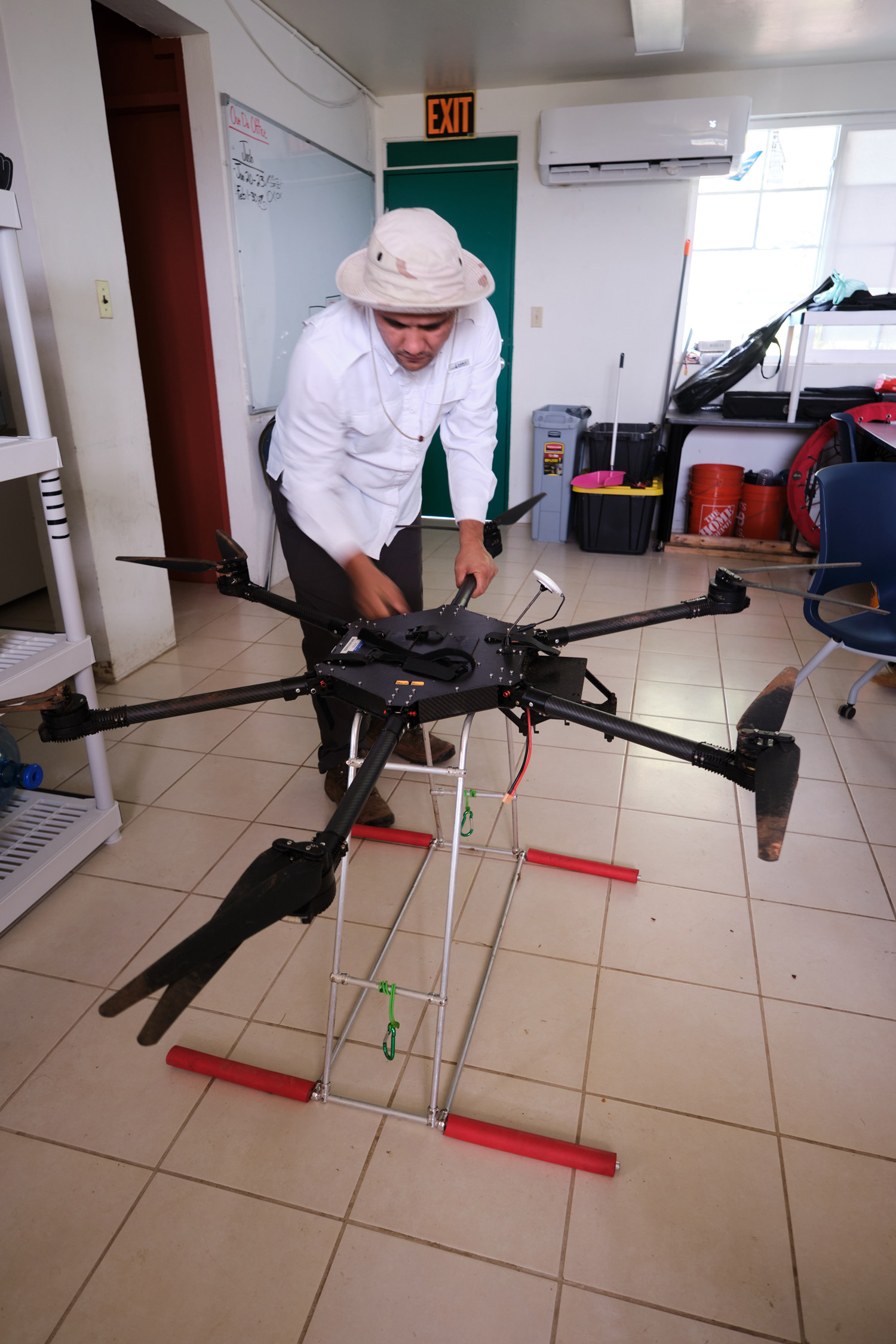
Drone seeding
For now, the GROW team is primarily using one drone for its seeding experiments, with the hope of expanding the program to include an entire fleet of seed-sowing devices.
“We’re still working out how to get it right,” said Anthony Ritter, a master’s student at the University of Guam who helms the drone-seeding research. “It would seem that you just drop some seeds, right? And you can do that. But to actually get them to germinate and live for more than a year, that’s the key.”
Team members are working to identify the best plants and seed ball composition for reforesting. They now know, for instance, that acacia trees, while non-native to Guam, are ideal for replanting in badlands because the nitrogen-fixing bacteria in its roots enable the trees to grow in degraded soils.
The researchers also constructed a machine – a spinning plastic drum powered by an air-conditioning motor – that can speed up the process of making seed balls, a combination of seeds, peat moss and red clay soil from the restoration site.
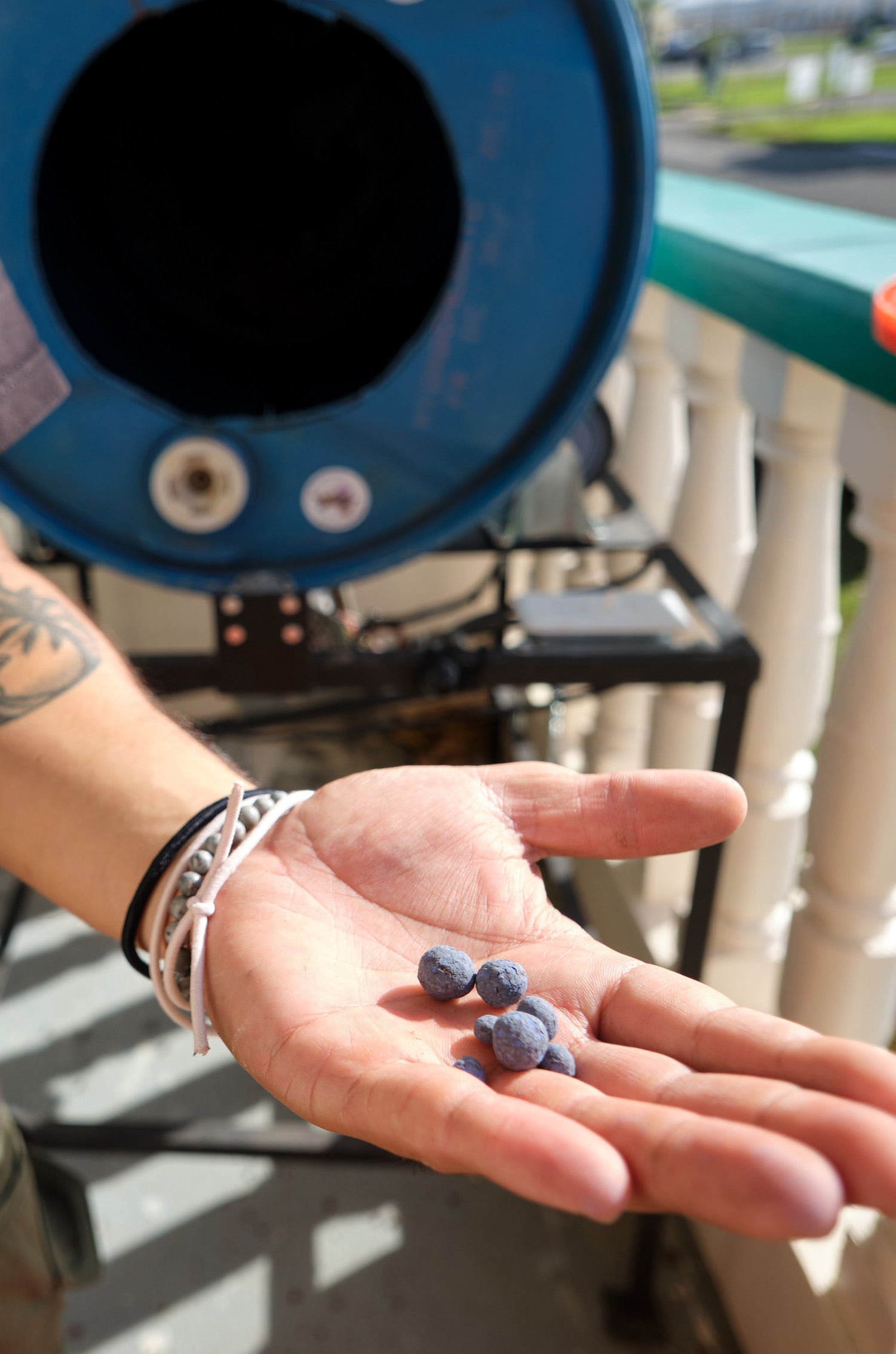
But the work hasn’t always gone smoothly.
During a demonstration flight this year, the drone, an older model designed to spread fertiliser and retrofitted to disperse seed balls, malfunctioned and crashed only a few minutes after takeoff.
“We’re trying to get smarter drones,” Ritter said. “If the point is to scale it up so that we can have multiple drones flying at one time, they need to be more intelligent.”
Still, the team members say they’re seeing progress. In parts of the site, older acacia trees planted by the team have grown into dense groves – transforming the previously barren landscape.

“You can walk under it versus walking over it,” Ritter said. “What really excites me is when the ground is covered. Then, we’re doing our job.”
The site also features various species of native plants. Juvenile da’ok trees with their bunches of dark-green, waxy-paddlelike leaves dot grassy areas. Young hibiscus and noni plants grow nearby.
As Concepcion strolled through a replanted stretch of land with the familiarity of walking through his backyard, he surveyed the dozens of young acacia trees poking out of the red clay soil.
“Hopefully, within the next two years, we will be walking through shade,” he said.
